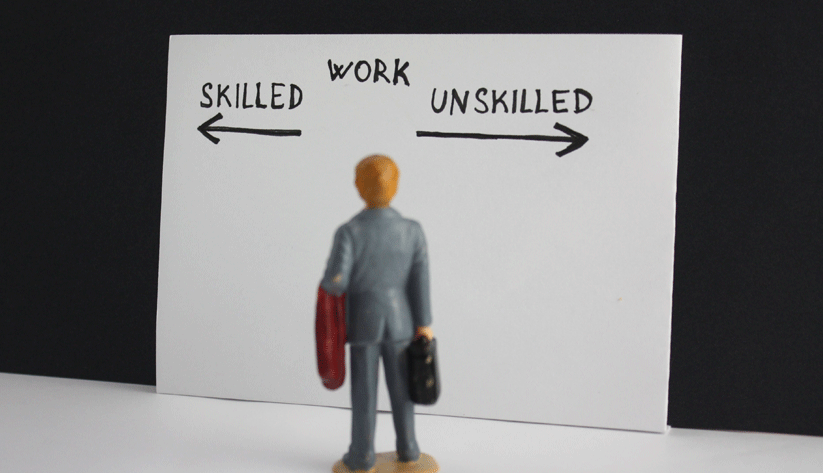
With U.S. unemployment down to levels not seen since 2000, job seekers are gaining the upper hand in the labor market as employers struggle to fill positions across skill levels. Such hiring difficulties are prompting some employers across the Southeast to raise pay.
"We've been hearing that wage pressure is building among firms. After implementing nonwage benefits such as increased vacation, some firms are unable to meet demand with their existing labor supply," said Shalini Patel, the coordinating director of the Federal Reserve Bank of Atlanta's Regional Economic Information Network, which regularly consults with firms from various industries in Georgia, Florida, Alabama, and parts of Louisiana, Mississippi, and Tennessee.
Although some industries such as trucking and construction have been grappling with talent shortages for years, a greater number of industries are more recently finding it harder to acquire workers across skill levels, Patel said. In the latest Beige Book report, southeastern business contacts reported more aggressive and creative recruiting and retention strategies compared with a year earlier.
Hirers in high-demand fields such as IT, nursing, and finance "are realizing that if they don't start paying more, they're not going to get the talent," Patel said. "The worker has the bargaining power."
A job change means a higher wage
Considering the health of the economy, wage growth has so far been moderate—meandering in the 3 percent range since early 2015, according to the Atlanta Fed's Wage Growth Tracker tool. Atlanta Fed president Raphael Bostic noted in an early May speech that other measures of unemployment that track people working part-time for economic reasons were at cyclical lows. Maximizing employment is part of the Fed's dual mandate from Congress, along with fostering price stability.
In today's labor market, moving to a new job is one path to a bigger paycheck, said Atlanta Fed economist John Robertson. "The people who change jobs are experiencing much faster wage growth than those who stay," he said.
The stronger economic conditions have also not meaningfully bumped up the U.S. labor force participation rate. As of April, it stood at 62.8 percent, roughly 3 percentage points lower than 10 years ago, when the nation was in the grip of the Great Recession.
Julie Hotchkiss, another Atlanta Fed economist, said that, based on historical behavior, the robust job growth suggests that labor force participation should be higher than it is, since the rate is a measure of employment opportunities. "People are not being as responsive as they have been historically to this very strong labor market," Hotchkiss said. "It is a bit of a mystery."
The decline in labor force participation follows workforce changes since the 2008–09 downturn. From the end of 2007 to the end of 2009, the total number of people working in the country fell more than 8 million, amid lower demand and employer cutbacks. Temporary and part-time work rose at all skill levels. The graying of the working-age population—with baby boomers approaching or entering retirement—is also taking people out of the job market.
Small businesses cite hurdles to hiring
An Atlanta Fed discussion paper published this year found that companies were addressing hiring difficulties in various ways. The paper shared additional insights from the New York Fed's 2017 Small Business Credit Survey. Of more than 5,600 businesses with fewer than 500 workers, two-thirds of firms with job openings reported difficulty hiring over the prior year.
In the survey, small firms identified labor issues on two broad fronts: too few applicants for jobs in general along with a dearth of workers with specific skills and education. "Employers respond differently to these two problems," said Mels de Zeeuw, an Atlanta Fed research analyst who cowrote the discussion paper.
Companies that aren't garnering enough applicants for job vacancies said they were more likely to raise pay or enhance benefits. Firms facing a skills shortage have taken additional steps such as restructuring duties of existing employees, offering more training, or relaxing job requirements. Overall, the most common response was to increase compensation. Patel noted that employers in big cities are expanding their candidate searches to new geographies.
Firms looking to fill positions that require less than a bachelor's degree were slightly less likely to have problems than those hiring for jobs that mandated one, the survey found. Building trades and service industries such as hospitality and leisure were more likely to report difficulties recruiting staffers who didn't have bachelor's degrees, with construction firms most frequently citing a shortage of workers with job-specific skills. The survey also found differences across location, with employers in rural towns facing more troubles hiring than those in bigger cities.
The survey determined that the lower a state's unemployment rate among less-educated people, the higher the likelihood that companies there had challenges filling jobs catering to those candidates.
"In a tight labor market, there will be more opportunities to move to jobs in other industries that have higher pay," de Zeeuw noted. He added that industries that tend to pay lower wages and already experience higher turnover will find it harder to lure job seekers or retain employees under these market conditions.
Companies have cited a host of reasons for the difficulty in acquiring lower-skilled workers, Patel said. These reasons include obstacles that job seekers face in accessing transportation and affordable housing as well as a lack of technical skills. "We do hear that [the lower skilled] tend to lack soft skills, such as showing up to a job on time," Patel added.
In the Fed survey, 36 percent of employers said a lack of soft skills was a hurdle to hiring, while 23 percent noted the difficulty job seekers had passing preemployment screenings.
Individual firms are also taking steps to address worker shortages. Earlier this year, Atlanta-based Home Depot said it would invest $50 million to train 20,000 workers—including carpenters, plumbers, and electricians—to help address the long-running scarcity of skilled workers in construction. The home improvement retailer cited U.S. Department of Labor data identifying 158,000 currently unfilled building industry jobs and said the ratio of open positions to hires in construction was at its highest level since 2007.
Policymaking can play a role in worker shortages
The small business survey results suggest potential policy responses that can help ease worker shortages in some employment sectors, de Zeeuw said. "Apparently, there's room for improvement in connecting our educational institutions with the construction industry to ensure a supply of skilled workers," he said. "We're probably not training enough skilled laborers like plumbers and electricians."
Though monetary policy does not address skill gaps, the Fed can play a role in bringing community and business stakeholders together to foster economic opportunity. Last year, the Atlanta Fed formed the Center for Workforce and Economic Opportunity to focus on solutions for many of the challenges that interfere with people's ability to work and to partner with community organizations that help prepare underserved populations for jobs.
Stuart Andreason, the center's director, said understanding issues such as worker shortages and how communities and policies can help address them are critical to the Fed's pursuit of maximum employment.
"When jobs go unfilled, some level of productivity and production is lost," Andreason said. "Finding ways to ensure that workers and work are well matched is critical. This is the work the Center for Workforce and Economic Opportunity is interested in."




